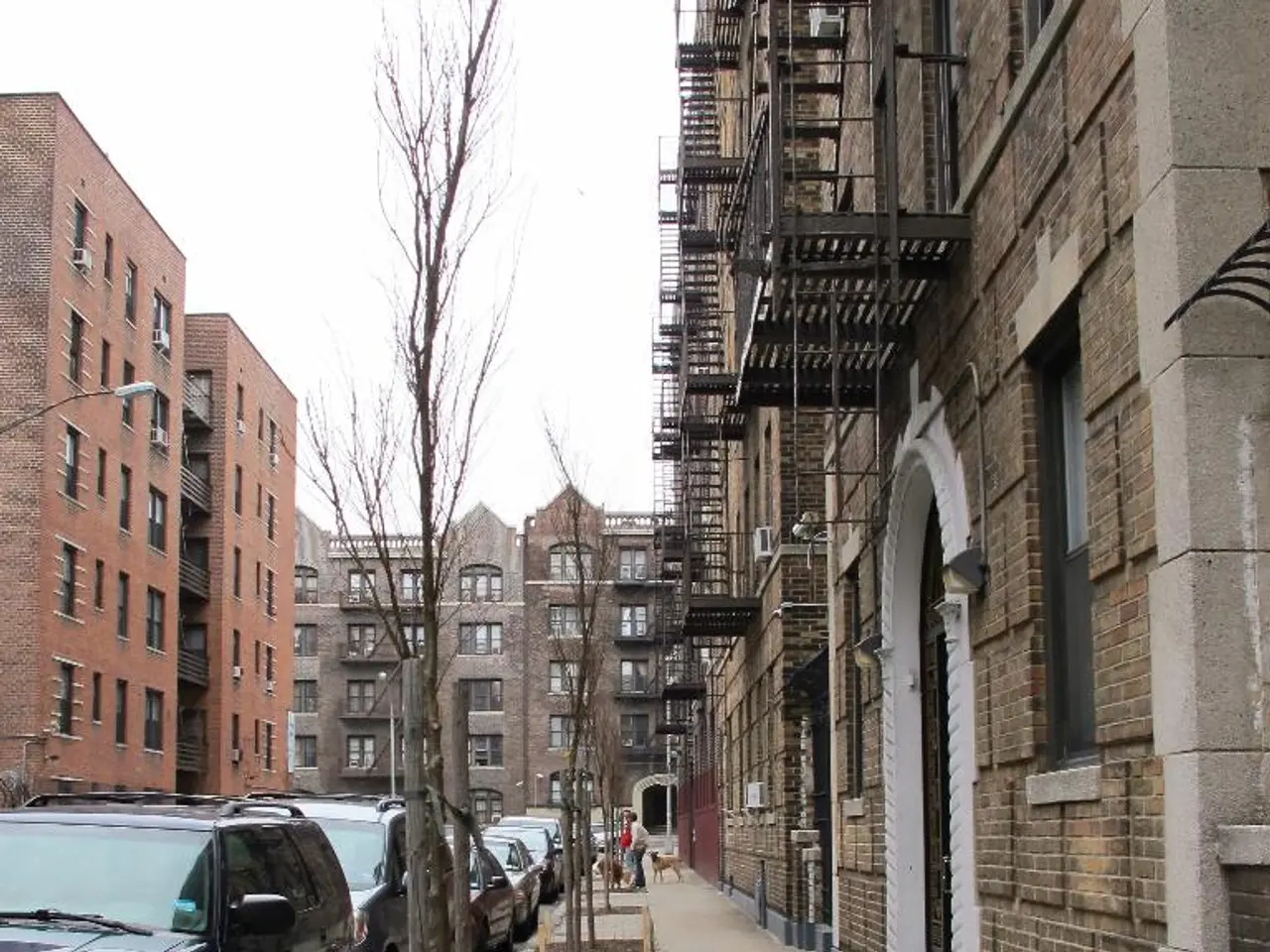Central and Eastern Europe faces a potential split due to a housing crisis looming on the horizon.
The housing crisis in Central and Eastern European (CEE) cities, particularly those experiencing high job growth, is a pressing issue threatening political stability and social cohesion in the region. The root cause of the crisis is a severe shortage of affordable housing in urban centers, driven by rising demand linked to economic opportunities, combined with inadequate housing supply, high construction costs, and speculative investment.
Key factors contributing to the crisis include rapid job growth and urbanization, limited affordable housing supply due to under-building and regulatory constraints, high construction costs, speculative real estate investments pushing prices and rents upward, and the existence of vacant and underutilized properties not converted into affordable housing.
To tackle this crisis, a range of solutions are being proposed, drawing inspiration from broader European approaches. These include increasing housing construction through government stimulus packages and reforms to construction laws to speed up building timelines and expand supply. For instance, Germany’s "construction turbo" initiative aims to build hundreds of thousands of homes annually with low-interest loans and increased funding for social housing, serving as a potential model for CEE cities.
Another solution is the development of subsidized social housing projects targeted at low-income households and young families to enhance affordability. Repurposing vacant buildings and commercial areas into affordable residential units is another approach that leverages existing underused urban spaces. Providing favorable financing conditions, such as low-interest loans, is also crucial to incentivize private and public sector housing development.
Promoting homeownership opportunities, particularly for younger populations, is another key strategy to stabilize communities and reduce rental pressure. Comprehensive European-level strategies, like the upcoming European Affordable Housing Plan, aim to integrate local government empowerment, urban planning innovations, and social justice considerations into housing policy.
Cosmin Marian, Professor and Chair of the Political Science Department at Babes-Bolyai University in Romania, argues that returning to mid-20th century levels of public sector scale, competency, and coordination is essential for restoring social and political stability and maximizing economic growth opportunities. Daniel Pop, a Lecturer in the Political Science Department at Babes-Bolyai University in Romania and a former Senior Advisor to the Open Society Foundation, emphasizes the importance of scale and meticulous planning in these housing initiatives.
Despite high home ownership rates in CEE, there is a critical imbalance between regions with job opportunities and urban cores with a scarcity of affordable housing. Failure to deliver these vital public goods to the working and middle classes risks continued flirtations with right-wing populist movements. Critically, these housing units should be serviced by green mobility options such as metro or tram lines.
In countries like Romania, Poland, Slovakia, Croatia, Hungary, and Lithuania, home ownership rates exceed 80%. However, the unexpected rise of populist Calin Georgescu in Romania's politics underscores widespread anxieties about the cost of living. Cluj-Napoca, Romania, a hub for high-value-added manufacturing and information technology, has housing prices per square metre higher than Athens, Genoa, Portland, and Belfast.
Construction costs decline when firms build with frequency and scale, as demonstrated by Spain's metro expansion projects. Therefore, the expansion of public development banks is a crucial step towards meeting housing demands, provided these funds are directed towards new construction. These housing units could be designated for rent, rent-to-own schemes, or outright sale. Access to public childcare, quality public schools, and public health services nearby is also important for these housing units to improve overall quality of life and reduce stress.
In conclusion, the housing crisis in CEE is a complex issue requiring comprehensive solutions. By focusing on accelerating affordable housing supply through policy innovation, financial incentives, and better use of existing city assets, supported both locally and at the EU level, we can address the root causes of the crisis and promote social and political stability in the region.
- The housing shortage in urban centers of Central and Eastern European (CEE) cities, exacerbated by factors such as limited affordable housing supply, rapid job growth, and speculative real estate investments, calls for innovative solutions, such as increasing housing construction through government stimulus packages and reforms to construction laws.
- Addressing the housing crisis in CEE also necessitates developing subsidized social housing projects for low-income households and young families, repurposing vacant buildings and commercial areas into affordable residential units, and providing favorable financing conditions to incentivize housing development.
- To further mitigate the housing crisis in CEE, promoting homeownership opportunities, particularly for the younger generation, is critical, as well as implementing comprehensive European strategies that incorporate local government empowerment, urban planning innovations, and social justice considerations into housing policy. Additionally, ensuring the availability of green mobility options and essential public services such as childcare, schools, and healthcare in these new housing units could improve quality of life and reduce social tension.




